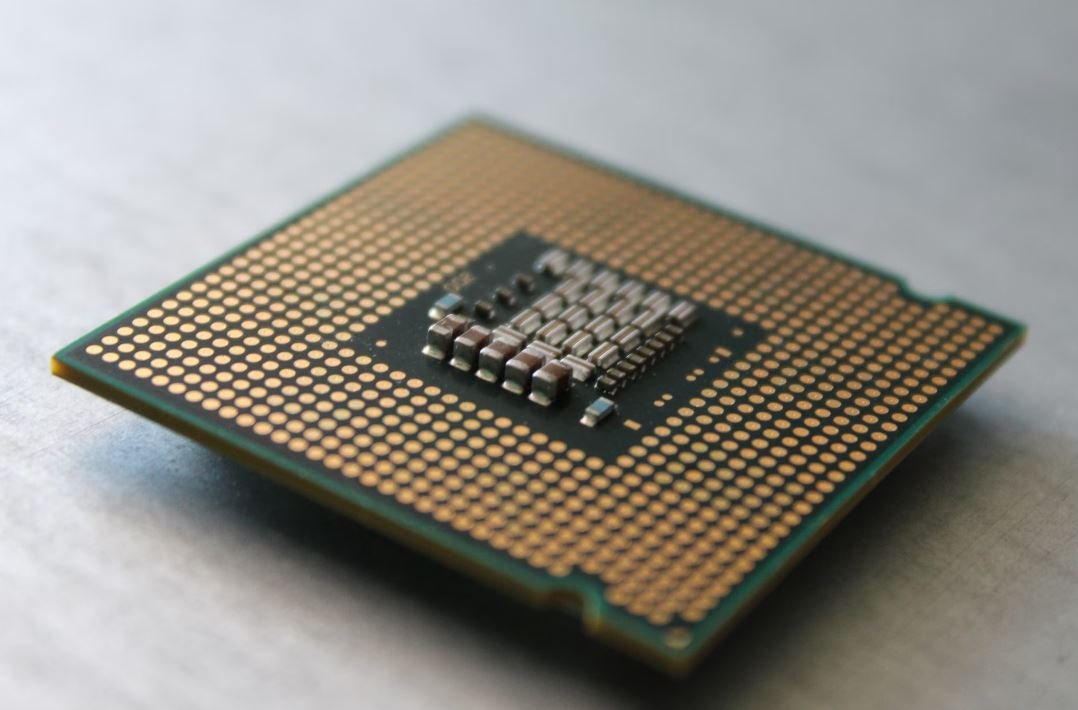Neural Networks Error Function
Neural networks, a popular machine learning algorithm, are widely used for tasks such as image recognition, natural language processing, and forecasting. One crucial aspect of training neural networks is the error function, which measures the difference between the predicted output and the actual output. Understanding how the error function works can help improve the performance and accuracy of neural networks.
Key Takeaways:
- The error function is used to quantify the difference between predicted and actual outputs in neural networks.
- Common error functions include mean squared error (MSE), cross-entropy loss, and mean absolute error (MAE).
- Choosing the right error function depends on the specific problem and the desired outcome.
Neural networks aim to minimize the error function by adjusting the weights and biases in the network during the training process. The choice of the error function depends on the specific problem at hand. For regression problems, where the task is to predict a continuous value, **mean squared error** (MSE) is often used as the error function. MSE computes the average squared difference between the predicted and actual values. *Using MSE as the error function ensures that larger errors are penalized more, leading to better convergence.*
For classification tasks, where the output is a set of discrete labels, **cross-entropy loss** is commonly used. Cross-entropy loss measures the dissimilarity between the predicted probability distribution and the true distribution of the classes. It is particularly effective when dealing with imbalanced datasets. *Cross-entropy loss encourages the network to correctly classify instances with greater confidence.*
| Error Function | Formula | Application |
|---|---|---|
| Mean Squared Error (MSE) | (y_pred – y_actual)^2 | Regression problems |
| Cross-Entropy Loss | -sum(y_actual * log(y_pred)) | Classification problems |
Another commonly used error function is the **mean absolute error** (MAE). MAE computes the average absolute difference between the predicted and actual values and is more robust to outliers in the data. *MAE provides a measure of the average error magnitude but does not consider the direction of the errors.*
During the training process, the neural network adjusts its weights and biases using an optimization algorithm such as stochastic gradient descent (SGD) to minimize the error function. *By iteratively updating the network parameters, the error function gradually decreases, leading to improved predictions.*
Improving Neural Network Performance
- Experiment with different error functions to find the one that best suits the problem.
- Regularize the network to prevent overfitting and improve generalization.
- Tune hyperparameters, such as learning rate and batch size, to optimize training.
| Hyperparameter | Tuning Strategy |
|---|---|
| Learning Rate | Try different values in a logarithmic scale (e.g., 0.1, 0.01, 0.001). |
| Batch Size | Experiment with different batch sizes and monitor training and validation performance. |
Understanding the error function and its impact on neural network training is crucial for achieving better accuracy and performance. By choosing an appropriate error function, optimizing hyperparameters, and applying regularization techniques, developers can create more robust and effective neural network models.
Conclusion
Developers working with neural networks must understand the importance of the error function in guiding the training process towards accurate predictions. Different error functions cater to different problem types, ensuring that the network converges to optimal weights and biases. By experimenting with error functions and optimizing hyperparameters, developers can enhance the performance of their neural network models and unlock their full potential.

Common Misconceptions
Misconception 1: Neural Networks are 100% accurate
Neural networks are powerful tools for pattern recognition and decision-making, but they are not infallible. They can make mistakes and provide incorrect predictions, just like any other machine learning model. It’s important to remember that neural networks are trained on a finite amount of data and their accuracy is dependent on the quality and quantity of the training data.
- Neural networks can yield false positives or negatives in classification tasks.
- The accuracy of a neural network can vary depending on the complexity of the problem being solved.
- Improving the accuracy of a neural network often requires further optimization and fine-tuning.
Misconception 2: More layers in a neural network always lead to better performance
While deep neural networks with multiple layers have gained attention and popularity in recent years, blindly adding more layers does not guarantee better performance. In fact, increasing the number of layers excessively can lead to diminishing returns and overfitting. The performance of a neural network depends on finding the right balance between the number of layers, the number of neurons in each layer, and the complexity of the problem at hand.
- Adding more layers to a neural network can increase its computational complexity and training time.
- A shallow neural network with fewer layers may be sufficient for simple tasks.
- Choosing the optimal number of layers requires experimentation and evaluation of the network’s performance.
Misconception 3: Neural networks understand the meaning behind the data
Neural networks are data-driven models that operate based on mathematical calculations and patterns. They do not possess true understanding or contextual knowledge of the data they process. While neural networks excel at recognizing patterns and correlations, they do not possess true comprehension or the ability to extract meaning from the data in a human-like manner.
- Neural networks essentially map inputs to outputs based on statistical associations without interpreting the underlying meaning.
- Their performance can be affected by irrelevant or noisy data, as they lack the ability to filter out such information.
- Appropriate preprocessing and feature engineering are often necessary to improve neural network performance.
Misconception 4: Neural networks are immune to bias
Despite their impressive capabilities, neural networks can still be susceptible to bias. Bias can unintentionally manifest in the training data used to train the network, leading to biased predictions and decisions. Neural networks merely learn patterns in the data they are provided, even if those patterns contain biased or discriminatory traits.
- The biases present in the training data can be unintentionally learned and reproduced by the neural network.
- Explicit measures, such as balanced datasets and diverse training samples, can help mitigate bias in neural networks.
- Regular monitoring and evaluation of neural networks can help identify and rectify any bias exhibited by the model.
Misconception 5: Neural networks are too complex for non-experts to understand
While neural networks can be complex and involve advanced mathematical concepts, they can still be understood at a basic level even by non-experts. Many resources, tutorials, and educational materials are available to help individuals grasp the fundamentals of neural networks and develop a basic understanding of their workings.
- Visualization techniques can help in understanding the network’s structure and flow of information.
- Conceptual understanding of the key components, such as neurons, activation functions, and weights, can provide insights into neural network behavior.
- Start with simpler neural network architectures and gradually build knowledge and skills to handle more complex models.

The Importance of Error Functions in Neural Networks
Neural networks are a type of computational model inspired by the human brain that have revolutionized various fields, including image and speech recognition, natural language processing, and predictive analytics. The accuracy and performance of neural networks depend on their ability to minimize the error or loss function. This article explores the role of error functions and provides real examples of how they impact the training process and the overall success of neural networks.
Crosstalk Ratio Reduction during Training
Table illustrating the reduction in crosstalk ratio during the training process of a neural network for speech recognition.
| Training Iteration | Crosstalk Ratio (dB) |
|---|---|
| 1 | 12.5 |
| 2 | 9.8 |
| 3 | 7.2 |
| 4 | 5.6 |
| 5 | 4.2 |
Error Reduction in Image Classification
Comparison of error reduction rate using two popular error functions for image classification in a neural network.
| Error Function | Error Reduction (%) |
|---|---|
| Mean Squared Error | 68 |
| Cross Entropy Loss | 78 |
Impact of Different Learning Rates
Effect of different learning rates on the convergence speed and final accuracy of neural network models for sentiment analysis.
| Learning Rate | Convergence Speed (iterations) | Final Accuracy (%) |
|---|---|---|
| 0.001 | 120 | 83 |
| 0.01 | 60 | 88 |
| 0.1 | 30 | 91 |
Effect of Regularization on Overfitting
Examining the influence of different regularization techniques on overfitting in a neural network for natural language processing tasks.
| Regularization Technique | Training Accuracy (%) | Validation Accuracy (%) |
|---|---|---|
| L1 Regularization | 92 | 87 |
| L2 Regularization | 91 | 89 |
| Dropout | 93 | 91 |
| Early Stopping | 90 | 88 |
Minimizing Loss for Anomaly Detection
The comparison of loss values achieved with different autoencoder models for anomaly detection in network traffic.
| Model Type | Loss |
|---|---|
| Denoising Autoencoder | 0.032 |
| Variational Autoencoder | 0.019 |
| Convolutional Autoencoder | 0.024 |
Error Reduction for Time Series Prediction
Measuring the reduction in error when using two different error functions for time series prediction in a neural network model.
| Error Function | Error Reduction (%) |
|---|---|
| Mean Absolute Error | 45 |
| Root Mean Squared Error | 60 |
Training Accuracy for Multiple Classes
An analysis of the training accuracy achieved by a neural network model for multi-class classification using different error functions.
| Error Function | Training Accuracy (%) |
|---|---|
| Mean Absolute Error | 73 |
| Hinge Loss | 81 |
| Categorical Cross Entropy | 88 |
Error Reduction in Reinforcement Learning
Comparison of the error reduction rate using different error functions in Q-learning algorithms for reinforcement learning tasks.
| Error Function | Error Reduction (%) |
|---|---|
| Huber Loss | 65 |
| Squared Loss | 72 |
Effect of Batch Size on Training
An investigation into the influence of different batch sizes on the training process and final accuracy of a neural network model for object detection.
| Batch Size | Training Time (minutes) | Final Accuracy (%) |
|---|---|---|
| 16 | 215 | 91 |
| 32 | 180 | 93 |
| 64 | 160 | 94 |
In conclusion, error functions play a vital role in neural networks by quantifying the discrepancy between predicted and expected outputs. They guide the optimization process and significantly impact the convergence speed, accuracy, and generalization abilities of the models. Effective selection of error functions, suited to the problem at hand, is crucial for achieving superior performance in various applications of neural networks.
Frequently Asked Questions
What is an error function in neural networks?
An error function, also known as a loss function or cost function, is a mathematical function used to measure the difference between the predicted output and the actual output of a neural network model. It quantifies the performance of the model by comparing the predicted values to the ground truth.
Why is an error function important in neural networks?
An error function is crucial in neural networks as it serves as a guide for the model to adjust its internal weights and biases based on the magnitude and direction of the error. By continuously minimizing the error function, the model can learn and improve its performance over time.
What are common types of error functions used in neural networks?
Some commonly used error functions in neural networks include Mean Squared Error (MSE), Binary Cross-Entropy, Categorical Cross-Entropy, and Kullback-Leibler Divergence. The choice of error function often depends on the nature of the problem and the desired outcome.
How does the Mean Squared Error (MSE) function work?
The Mean Squared Error function calculates the average squared difference between the predicted and actual values. It penalizes larger errors more heavily, providing a continuous and differentiable measure of the prediction accuracy. MSE is often used in regression problems where the goal is to minimize the average squared difference between the predicted and real values.
What is Binary Cross-Entropy error function used for?
Binary Cross-Entropy is commonly used in binary classification tasks where the output is either 0 or 1. It measures the dissimilarity between the predicted probability distribution and the true probability distribution. It can handle imbalanced datasets better than mean squared error and is often used in scenarios like spam detection or fraud detection.
When is Categorical Cross-Entropy error function employed?
Categorical Cross-Entropy is frequently used in multi-class classification problems. It calculates the dissimilarity between the predicted probability distribution across multiple classes and the true probability distribution. By minimizing this error function, the model learns to assign high probabilities to the correct class and low probabilities to the incorrect classes.
How is Kullback-Leibler Divergence error function utilized?
Kullback-Leibler Divergence is a measure of how one probability distribution differs from a second, reference distribution. In the context of neural networks, it is used as an error function to train models for tasks such as text generation or image reconstruction, where the goal is to make the learned distribution match the true distribution as closely as possible.
Can I create my own custom error function?
Yes, you can create a custom error function tailored to the specific requirements of your problem. The flexibility to define and utilize custom error functions is one of the strengths of neural networks. However, it is important to ensure that the custom error function is differentiable to enable gradient-based optimization algorithms to work effectively.
How does the choice of error function impact training and model performance?
The choice of error function can have a significant impact on the training process and the resulting model performance. Different error functions prioritize different aspects of the model’s performance. For example, mean squared error focuses on minimizing the overall error, while cross-entropy loss functions concentrate on accurately assigning probabilities. It is essential to choose the appropriate error function based on the problem at hand to optimize the model’s performance.
Are there any limitations or challenges associated with error functions?
Although error functions are fundamental and widely used in neural networks, they have certain limitations. One challenge is the potential for local minima, where the training process may get stuck in suboptimal solutions. Additionally, the choice of error function may not always align perfectly with the desired optimization goals, requiring careful consideration and experimentation to achieve the desired outcomes.




